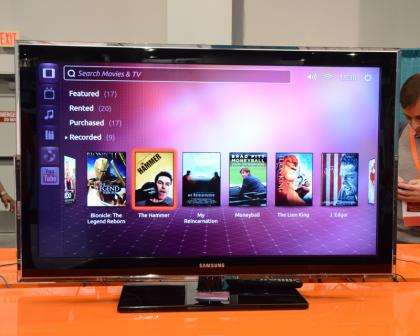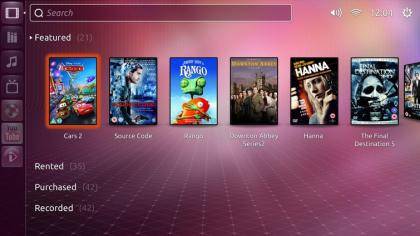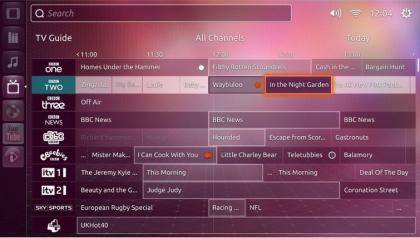Ubuntu TV brings Linux to television
Following on from its announcement that it wanted its version of Linux to be a multi-screen platform, Ubuntu TV has surfaced at CES showing how the OS can make televisions smarter.
Still in an early demo phase, what was on show was a proof of concept design running on a Boxee Box, but Ubuntu wants its OS to be integrated directly into a TV for the final version, putting the OS at the heart of home entertainment.
With Ubuntu 11.04, and continuing into the current version, Ubuntu 11.10 , the new Unity interface was introduced with its simplified look and feel and side-bar Launcher. It's this interface that Ubuntu TV uses, bringing a common feel to all versions of the operating system. It's all up for change, but the current system has links for Films, Music, TV, plus favourite apps.

The Unity interface makes its transition to the TV.
The current demonstration is designed to work without access to the internet, but any final version would, of course, tap into online content. In fact, that's going to be a key part of the system, but what Ubuntu wants to do is get people to "think less about where the content is stored".
In other words, all of your content is pulled from online services and your local network and presented together in an easy-to-use interface. On top of that Ubuntu is looking to provide extra content services itself.
At the moment the Ubuntu One store only has music in it, but the company is looking to expand it to bring video to the platform as well.
Key to this is having the right hardware to play the types of video most users will want to use. For any TV the OS is installed on, hardware acceleration is a must-have. Both ARM and x86 platforms are supported, but given that Intel's not focussing on being in TVs, it's ARM CPUs that the system is most likely to run on.
Codecs are also important, and Ubuntu says it can provide and ship legal versions to work with all of the content that's required.

The user interface looks neat and was smooth operating at 60fps.
In the demonstration that we saw Full HD 1080p video playing, while the interface ran at a slick 60fps with no slow down. Again, everything's open to change, but the interface looked neat. Videos were split into sections depending on whether they were bought, rented or recorded.
Live TV can be viewed with a neat integrated guide listing. Support for a built-in PVR is also there, so you can even record through the user interface.

The TV guide shows you what's on and integrates with any PVR facility that may be built into the TV.
You're not limited to what's shipped with the OS or on the TV, though, as the Ubuntu Software Center will let users download apps specific to TV without having to see all of the other generic Linux applications.
The source code has been released to the open source community for them to have a look at, while Ubuntu continues to talk to prospective partners. We could well have more information by the end of the year, alongside another demonstration of Ubuntu on a different type of product.